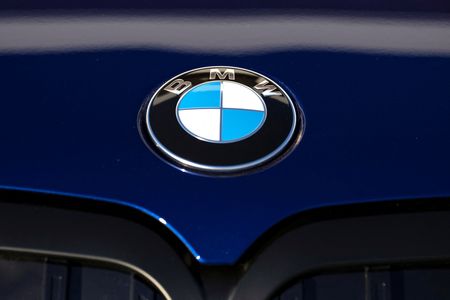LEIPZIG, Germany (Reuters) -BMW is testing a burner able to operate on both hydrogen and gas in its paint shop in Leipzig, the carmaker said on Thursday, as it also announced an 800-million-euro ($782 million) investment in new battery assembly lines at the plant.
The burner, developed together with combustion technology firm Saacke to reduce carbon emissions in the production process, is able to switch from hydrogen to gas or vice versa while in use.
For now, the carmaker buys hydrogen made with natural gas and buys certificates for green hydrogen, made by the same producer using electrolysers powered by renewable energy, to balance out its carbon footprint.
In future, it plans to obtain green hydrogen directly into the plant through an externally run pipeline expected to be running from 2024.
Carmakers looking to reduce dependence on Russian gas have been struggling to find a solution for how to power their paint shops without it.
If the pilot burner survives the test and enough green hydrogen is available, all the burners in the paint shop – among the most energy-intensive portion of the car manufacturing line – could be converted to hydrogen, plant director Petra Peterhaensel said.
BMW already uses a fleet of hydrogen-powered trucks for logistics transport and five storage tanks on the premises.
Green hydrogen has been touted as key to decarbonising industries reliant on coal, gas and oil, but has traditionally been far more expensive to make than other forms of hydrogen – four times more so than hydrogen made from gas, BMW’s own supplier told local press in March.
But soaring natural gas prices are making hydrogen produced from fossil fuels increasingly uneconomic, spurring new interest in green hydrogen.
Also on Thursday, BMW said it was adding a third battery assembly line and five cell varnishing lines to the Leipzig plant by 2024, with two more high voltage battery assembly lines to follow after that.
The carmaker assembles batteries in two further plants in Germany – Dingolfing and Regensburg – as well as its U.S. Spartanburg site and its Shenyang plant in China.
($1 = 1.0226 euros)
(Reporting by Victoria Waldersee; Editing by Mark Potter and Bernadette Baum)

